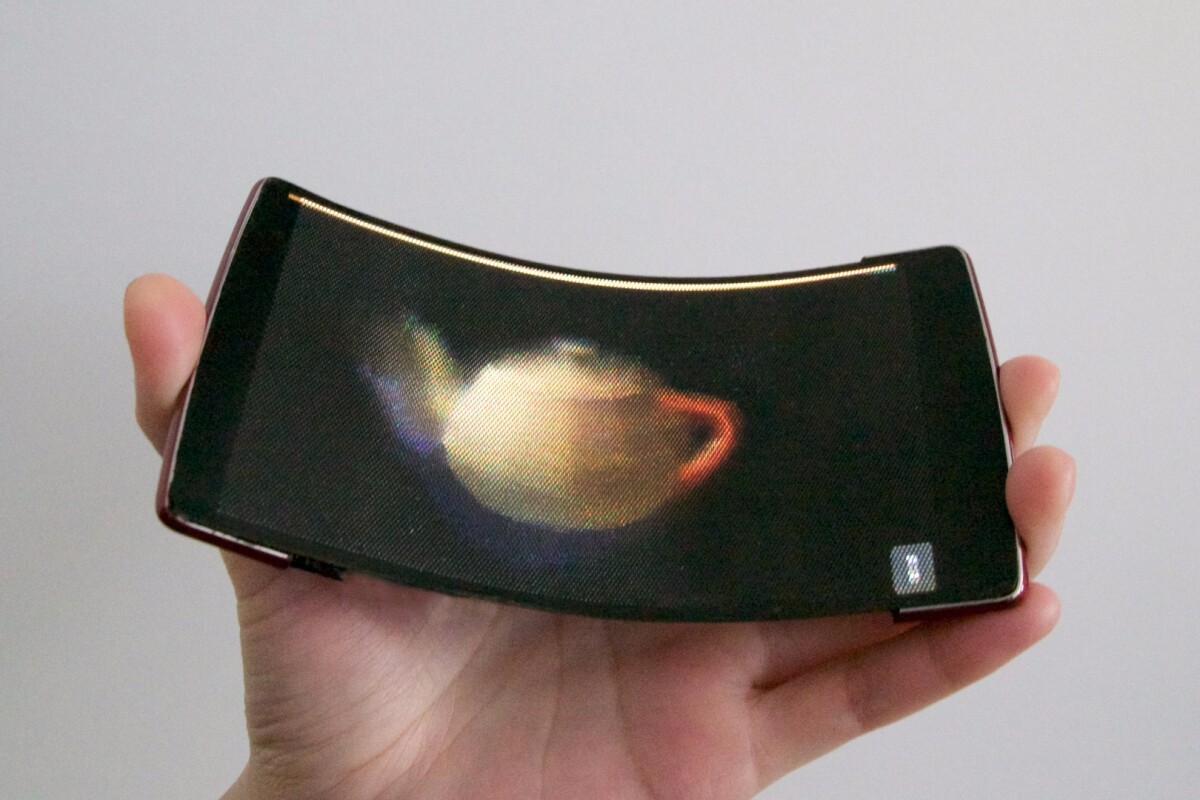The same team that developed a flexible phone which treats bending its screen as a form of input have now done themselves one better by creating a flexing display that's also holographic. Queen's University's Human Media Lab calls its new device HoloFlex and it can render 3D images visible from different angles without the need for glasses or head tracking.
Holoflex is the successor to the ReFlex device from the same lab. Both are equipped with a bend sensor that allows the user to flex the display as a means a moving objects on the display along a z-axis. For example, in a demonstration video (at the end of the article), bending the phone is shown moving objects along a third dimension and also activating the slingshot in a (apparently home-brewed) 3D version of Angry Birds.

"By employing a depth camera, users can also perform holographic video conferences with one another," says the lab's director, Dr. Roel Vertegaal. "When bending the display users literally pop out of the screen and can even look around each other, with their faces rendered correctly from any angle to any onlooker."
HoloFlex uses a 1920 x 1080 Flexible Organic Light Emitting Diode (FOLED) touchscreen display that renders 12-pixel wide blocks in 3D by projecting them through a 3D-printed flexible microlens array of over 16,000 fisheye lenses. The result is a 160 x 104 resolution 3D object that can be viewed from any angle by rotating the phone. That's extremely low-res compared to the 2D non-flexible mobile devices we use today, as you can see below, but still perhaps an exciting sneak peek at future gear.

The phone itself has much the same guts as 2015 flagship phones like the LG G Flex 2 and HTC One M9. HoloFlex is powered by a 1.5 GHz Qualcomm Snapdragon 810 processor, 2 GB of RAM, Android 5.1 and an Adreno 430 GPU supporting OpenGL 3.1.
Dr. Vertegaal sees potential for the HoloFlex technology for applications like editing 3D models for 3D printing and in holographic gaming.
While Apple has already claimed the brand name 3D Touch, for its pressure-sensitive iPhone displays, perhaps it would be a more appropriate name for this prototype, which lives up to it a bit more literally. After the technology behind HoloFlex evolves a bit more, most notably getting sharper 3D visuals, it could add a new dimension of innovation to mobile devices that have begun to grow stagnant.
You can see the tech in action in the video below.
Source: Queen's University






